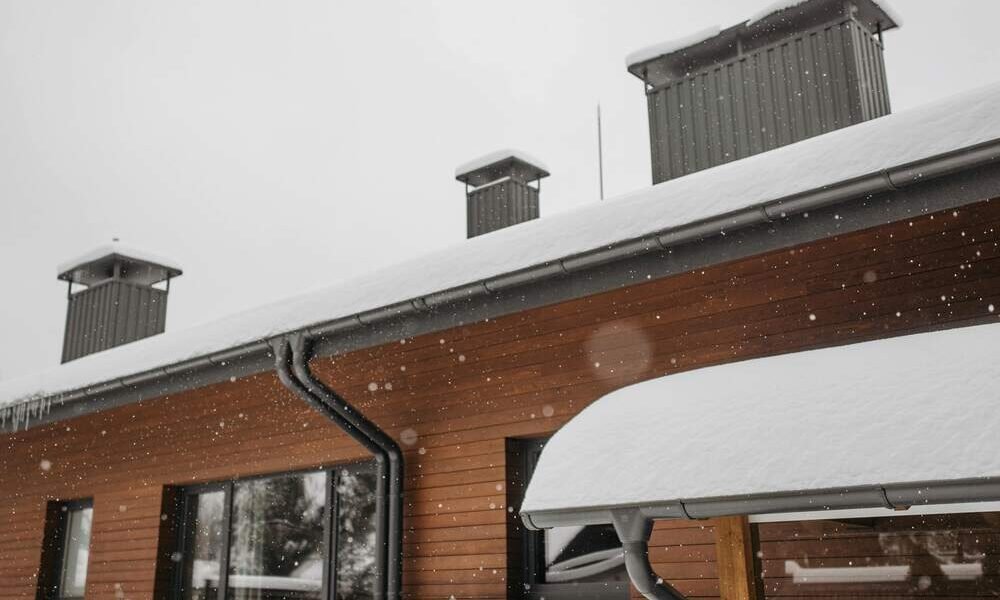Water damage is one of those problems that can sneak up on you. At first, it might show up as a small crack in the wall, a little pooling near the base of your home, or some musty smells in the basement. But over time, water that seeps into or settles around your foundation can cause serious issues, compromising the structure of your house, creating mold, and leading to expensive repairs you never planned for.
The foundation is literally what your home rests on. If it becomes unstable due to erosion, excess moisture, or pressure from expanding soil, it can affect your walls, floors, plumbing, and more. And here’s the tricky part: most homeowners don’t realize anything is wrong until the damage has already started.
If you live in areas like Florida or the Southeastern U.S., where heavy rainfall is frequent, and humidity is high, your home could be even more at risk. That’s why it’s smart to take a few proactive steps now to make sure your foundation is protected for years to come.
Start at the Top: Maintain Your Gutters and Downspouts
One of the simplest and most effective ways to protect your foundation is to make sure water is being moved away from your house properly. That starts with your gutters and downspouts. If they’re clogged, broken, or not installed correctly, rainwater can pour straight down the sides of your home and pool around the base. Over time, that constant moisture weakens the soil and seeps into cracks, putting your foundation at risk.
If you’re unsure whether your gutters are doing their job or you know they haven’t been cleaned or inspected in a while, it’s a good idea to get professional help. Partnering with experts like Gutter Pros ensures your system is installed, maintained, and functioning correctly year-round, preventing water from accumulating in the wrong places and causing damage where it hurts most.
They specialize in seamless gutter installation, gutter guard protection, and advanced drainage solutions. Their team helps homeowners prevent foundation issues by offering customized systems that keep water moving safely away from the home. With a focus on long-term durability and low-maintenance results, they provide peace of mind through every season.
Ensure Proper Grading Around Your Home
The land around your home should slope gently away from the foundation. This slope, known as grading, directs rainwater and runoff away from your house instead of letting it settle around the base. If the ground is flat, or worse, sloping toward the house, you could be inviting moisture problems without even realizing it.
Walk around your home after a good rain and check for puddles or soft spots near the foundation. If you notice any water collecting, it might be time to add soil and regrade the area. It is an easy fix for many homeowners, and if you’re not comfortable doing it yourself, a landscaper can help adjust the grade to keep water moving in the right direction.
Extend Downspouts Away from the Foundation
Downspouts that dump water right next to your house can be just as damaging as having no gutters at all. The goal is to move that water as far from your home’s base as possible—ideally five to ten feet away.
One solution is to add downspout extenders, which are inexpensive and easy to attach. If you’re looking for something more permanent, consider installing underground piping that directs water out to a safe distance. Don’t forget to check that any splash blocks are angled correctly to guide water away, not back toward the foundation.
Seal Cracks and Inspect the Basement Regularly
Tiny cracks in your basement walls or floors might not seem like a big deal at first, but they can quickly become entry points for water. Sealing them with a waterproof sealant or epoxy can stop water from getting inside and prevent further structural weakening.
It’s also important to check your basement or crawl space a few times a year. Look for signs of moisture, like wet spots, stains, musty smells, or flaking paint. Even something as small as condensation can be an early sign of water creeping in. Taking action now can save you from costly repairs later on.
Consider a French Drain or Other Drainage System
For homes in areas with heavy rain or poor soil drainage, surface water might be an ongoing issue. In those cases, it might make sense to install a French drain or a similar system. A French drain is a gravel-filled trench with a perforated pipe that redirects water away from your foundation.
These systems aren’t necessary for every homeowner, but they can be a smart investment if you notice recurring drainage problems, even after fixing gutters and grading. Because installation involves digging and planning, it’s best to consult with a drainage expert to see what solution is best for your yard.
Keep Landscaping Foundation-Friendly
Well-placed landscaping can help manage water, but poor placement can do more harm than good. Trees and large shrubs should be planted far enough from your foundation to avoid root intrusion, which can shift the soil and create uneven pressure on the foundation walls.
Be mindful of how much you’re watering flower beds or garden areas near your home. Too much water in the soil around the base of your house can lead to expansion and contraction that cracks or weakens the foundation. Mulch and ground cover should be used wisely to retain moisture, but not so much that they trap water right against the house.
Install a Sump Pump if Needed
If you live in a flood-prone area or have a basement that tends to take on water, installing a sump pump can help protect your foundation. This device collects excess water and pumps it safely away from the house, keeping your basement dry even during heavy storms.
Sump pumps are especially useful in homes with older foundations or in regions with high groundwater. Make sure to test the pump periodically to ensure it’s working, and consider adding a backup battery in case of a power outage during a storm.
Know the Warning Signs of Foundation Trouble
The earlier you catch signs of foundation damage, the easier it is to fix. Watch for cracks in walls or ceilings, doors or windows that stick, uneven floors, or gaps between walls and moldings. These may be signs that water has already started to affect your foundation.
Pay attention to changes over time. A small crack that’s growing larger or more frequent moisture around your basement should prompt action. Don’t wait for a major issue before calling in a professional. Foundation repairs are much easier (and less expensive) when handled early.
Protecting your foundation doesn’t require major renovations or a huge budget. Simple steps like keeping your gutters clean, grading your yard properly, and checking for cracks can make a huge difference over time. These preventative measures not only save you from unexpected repairs but also help maintain your home’s value and structural integrity.
You may also read (from leaks to cracks how to handle home repairs efficiently).




